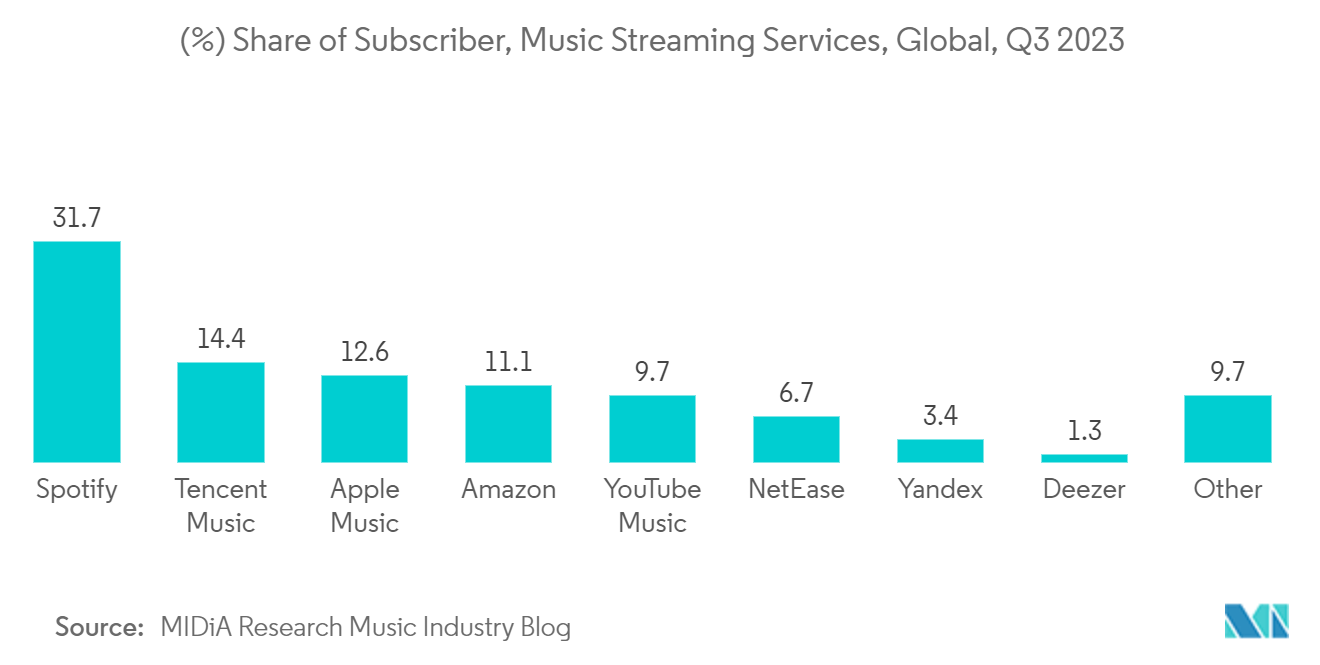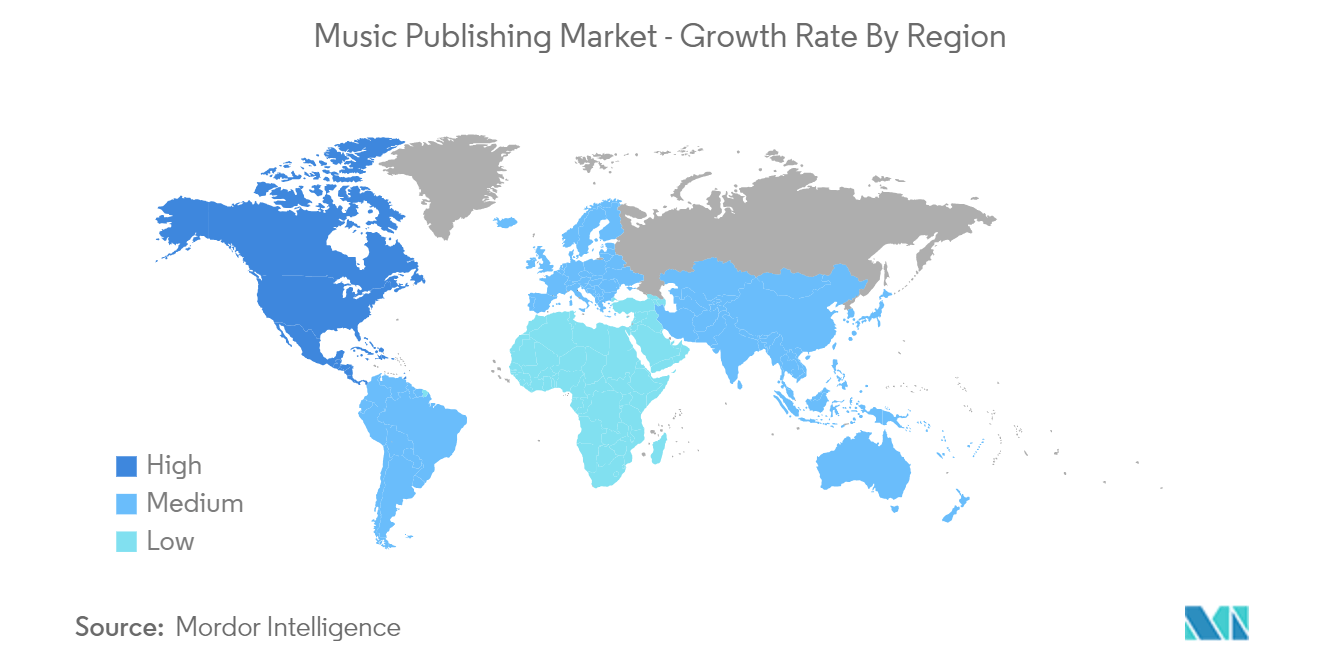Market Trends of Music Publishing Industry
Growth of Digital Streaming is Driving the Music Publishing Market
- The growth of digital streaming has reshaped the music publishing landscape, transforming how music is consumed, monetized, and managed. Platforms such as Spotify, Apple Music, and YouTube have dominated music consumption, overshadowing traditional sales and downloads. This surge in demand for licensed music, driven by rising subscriptions, has translated into higher royalties for publishers and songwriters. Consequently, publishers are adapting and focusing on digital distribution in their licensing agreements.
- Streaming's influence on music publishing has gone beyond revenue. Platforms have collected vast amounts of data on listener behavior, empowering publishers to grasp music trends and profitability. Armed with this data, publishers have refined promotions, acquired suitable catalogs, and structured licensing deals. This data-driven approach has not only sharpened revenue strategies but also enhanced the market's responsiveness to consumer preferences.
- According to a Survey by MIDiA Research in Q3 of 2023, Spotify dominated the streaming subscriber market with a 31.7% share, more than double that of Tencent Music, the second-ranked service. Apple Music, Amazon, and YouTube also held significant positions.
- Digital platforms have not only expanded the reach of music publishing but also broken down traditional geographic barriers. This globalization has fostered cross-border collaborations and licensing deals, driving growth in international markets. Publishers have diversified their catalogs to appeal to a wider audience, thereby increasing their revenue potential.
- Streaming has not just been about consumption. It is a potent tool for music discovery and promotion. Curated playlists, algorithms, and user-generated content have democratized music exposure, offering independent artists a level playing field. Publishers have played a crucial role, ensuring their songs secure prominent playlist placements, leading to increased royalties.
- With streaming at the forefront of music consumption, publishers have overhauled their business models. As physical sales have declined, publishers have pivoted to streaming as their primary revenue source. This shift has prompted the development of new licensing and revenue-sharing models, aligning with the digital era. By adapting swiftly and embracing technological advancements, publishers have been well-positioned to excel in this increasingly digital-centric industry.

North America Accounts for a Significant Share in the Market
- North America, led by the United States, commands a substantial portion of the global music publishing market, driven by its expansive and well-established music industry. The region's dominance is underscored by a dense presence of music publishers, record labels, and a robust network of distributors and streaming platforms. Key cities like Los Angeles, Nashville, and New York serve as epicenters for music production and publishing, housing numerous influential entities. This clustering not only fosters significant revenue but also solidifies North America's market supremacy.
- Leading music publishing entities headquartered in North America, particularly in the United States, are pivotal in bolstering the region's market standing. Powerhouses like Universal Music Publishing Group, Warner/Chappell Music, and Sony/ATV Music Publishing boast extensive music catalogs and global networks, granting them substantial market influence. Their dominance cements North America's pivotal role in the global music publishing landscape.
- With its stringent copyright laws, North America's robust legal framework, especially in the United States, is instrumental in upholding the region's market share. The United States boasts comprehensive copyright legislation that safeguards the rights of music creators and publishers. Entities like the American Society of Composers, Authors, and Publishers (ASCAP) and Broadcast Music Inc. (BMI) diligently advocate for fair compensation for artists. This legal stability not only fosters confidence but also attracts investments, nurturing growth in the music publishing domain.
- Technological advancements and digital music innovations in North America further fortify its music publishing prowess. The region hosts tech giants like Apple, Amazon, and Spotify, revolutionizing music consumption through cutting-edge streaming services. These platforms not only open up new revenue avenues for music publishers but also broaden their market outreach. Leveraging advanced analytics and data-driven strategies, publishers in North America optimize their earnings and streamline catalog management.
- North America's profound cultural influence, especially emanating from the United States, reverberates across the music publishing sphere. The United States, a cultural juggernaut, produces music that resonates globally. Genres like pop, rock, hip-hop, and country enjoy widespread international appeal, fueling a global appetite for North American music. This pervasive cultural sway ensures that North American music publishers enjoy a steadfast and expanding market, both domestically and internationally, solidifying their industry dominance.


